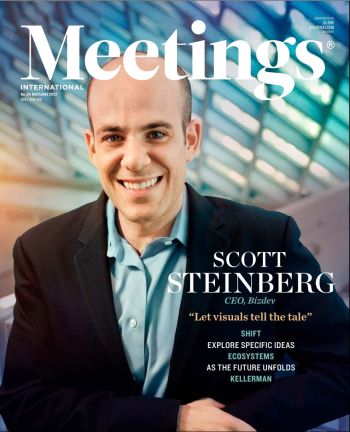
16 Jun FUTURIST KEYNOTE SPEAKER ON THE FUTURE OF MEETING AND EVENT PLANNERS
The live events industry has had a rollercoaster ride of a last few years, right? Thankfully, things seem to be trending in the right direction. Looking ahead though, the future of meeting and event planners will see industry pros needing to evolve and innovate to stay relevant and thrive in an increasingly competitive landscape. Soooo – as a keynote speaker, consultant, and friend of many MICE industry pros, I wanted to speak on what we can anticipate here as we move deeper into the world of tomorrow.
As a sporting opener, let’s think about how the rise of virtual events has revolutionized the meeting and event planning industry, providing new opportunities for planners to reach global audiences and offer more flexible event formats. In the future, hybrid events – which combine both in-person and virtual components – will become increasingly popular. Meeting and event planners are going to therefore have to develop strategies for seamlessly integrating these two elements, ensuring that both in-person and remote attendees have a cohesive and engaging experience. By embracing hybrid events, planners can offer more accessible, inclusive, and cost-effective event experiences.
Of course, in the next 2-5 years, personalization will also play a growingly crucial role in ensuring the success of meetings and events. The future of meeting and event planners will therefore encompass having to leverage data and technology to create tailored experiences that resonate with diverse audiences. For example, segmenting attendees based on their interests, professional backgrounds, or learning preferences and delivering customized content accordingly. By offering personalized experiences, planners will be able to increase attendee engagement, satisfaction, and loyalty, though.
Conference and tradeshow producers will be putting a greater reliance on data and analytics to make informed decisions and optimize event performance going forward too, I anticipate. That means having to collect and analyze data on attendee engagement, satisfaction, and behavior to identify areas for improvement and measure the success of their events. This data-driven approach should enable planners to make more informed decisions, allocate resources effectively, and ultimately deliver better event experiences, however.
And also keep in mind that one of the core objectives of meetings and events is to facilitate connections and collaboration among attendees. Tomorrow’s success will likely also thus depend on developing innovative strategies for fostering networking and collaboration, both in-person and virtually. Planners will likely be incorporating interactive activities, breakout sessions, and dedicated networking spaces into event agendas, as well as leveraging technology to facilitate virtual connections and conversations. By prioritizing collaboration and networking though, MICE industry leaders can create much more dynamic and valuable event experiences for their attendees, though.



